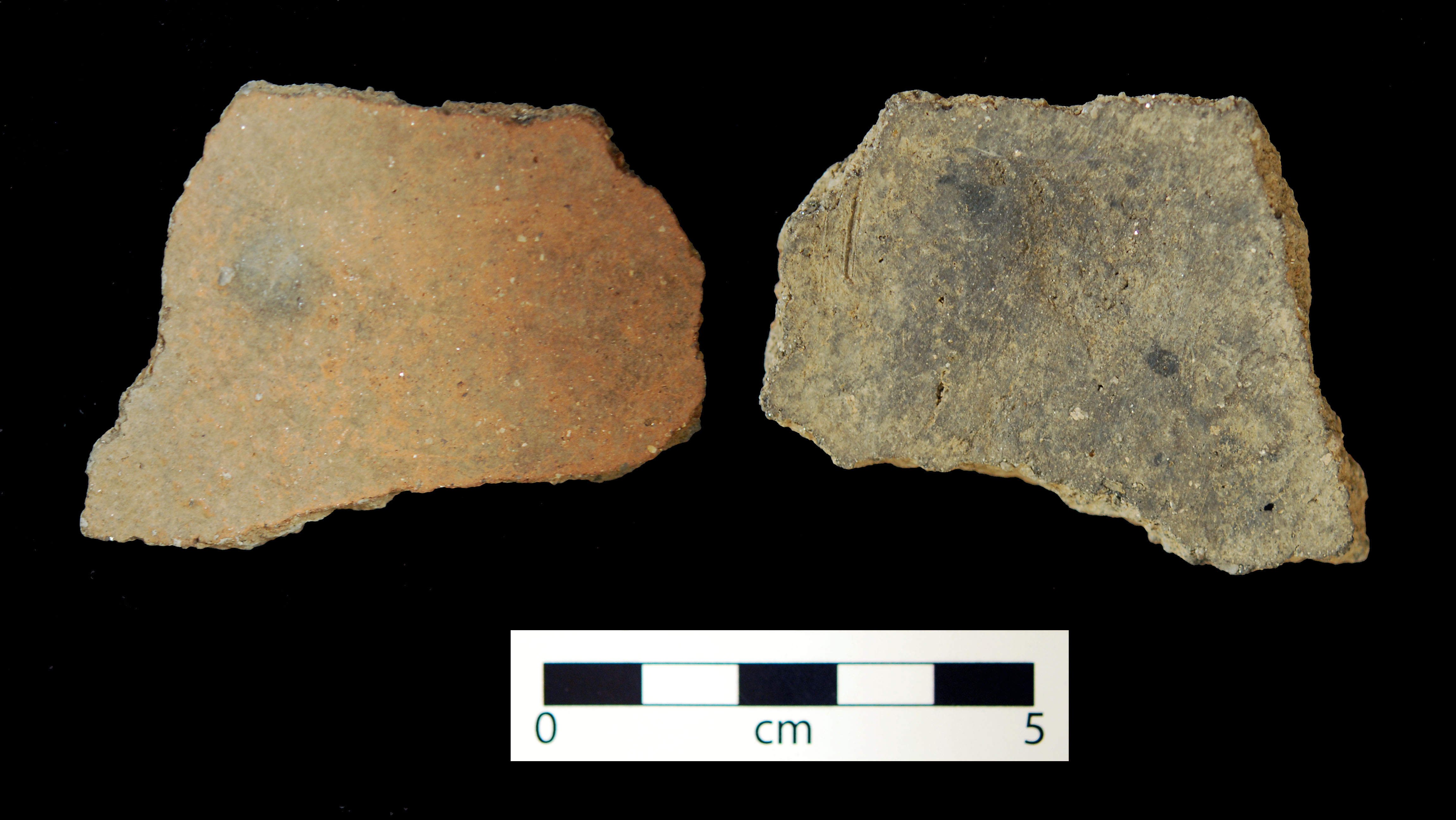Prescott Gray is the plainware version of Prescott Gray Ware. Distribution of this type of pottery is typically from the San Francisco Mountains west to the Walapai Mountains and from the Santa Fe Railroad south to the vicinity of Yarnell Hill.
Archaeological Culture: Prescott
Date Range: A.D. 1000-1400.
Construction: By paddle and anvil.
Firing: Partially in an oxidizing atmosphere and partially in a reducing atmosphere.
Temper: Quartz sand, crushed rock and mica; mica flakes always show on both surfaces; temper more than 50% of core.
Surface Finish: Interior, irregular and bumpy; exteriors smoothed; compacted.
Surface Color: Jar exteriors are brown or red; jar interiors are generally gray, occasionally red; bowl interiors are gray; bowl exteriors are gray, frequently pinkish, or reddish tint.
Forms; Bowls, jars, dippers and scoops.
Vessel Thickness: 5.1 mm to 8 mm; average about 6.5 mm (bowls); 8.9 to 10.6 mm; average about 10 mm (jars).
Decoration: No painted decoration.
Similar ware(s): Aquarius Orange, Verde Brown, Kirkland Gray, Wingfield Plain, Aquarius Brown, Cerbat Brown, and Gila Plain. See the 2001 Northern Arizona University Ceramic Manual (link opens in new window) for detailed comparisons of these types.
Compiled from the following sources:
Colton, Harold. (1958) Pottery Types of the Southwest. Museum of Northern Arizona Ceramic Series No. 3D. Flagstaff, Arizona.
Compiled by:
April Peters, Northern Arizona University Anthropology Laboratories.

